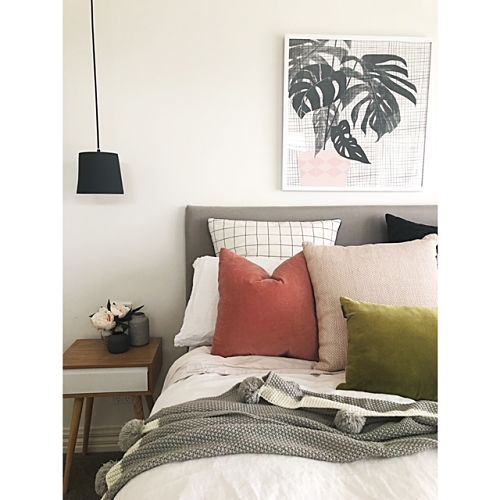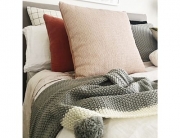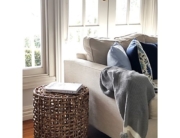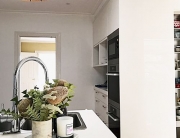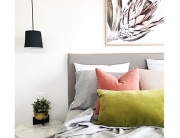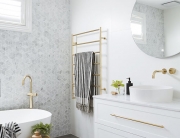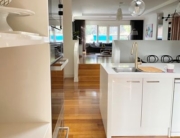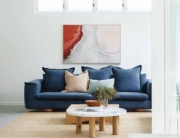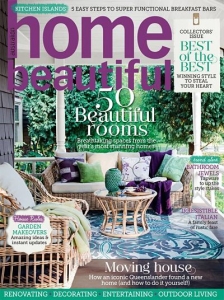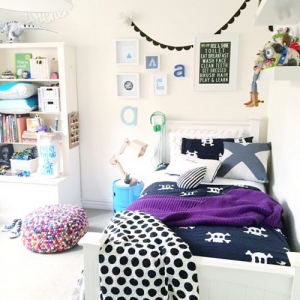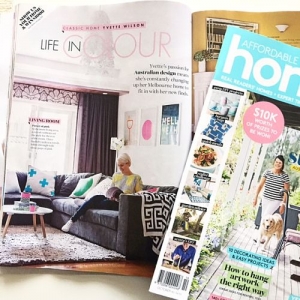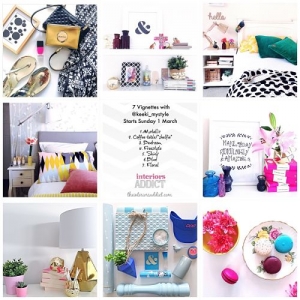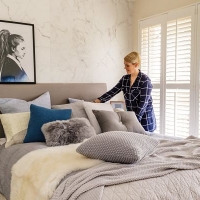If you’re thinking about renovating a room, you’ll want to consider a range of details, everything from the lighting to the upholstery. But one element that should definitely shouldn’t omit from your musings is wall art – something that is important for practically every room.
Wall art is, as you might imagine, a fabulous design opportunity. Using wall art isn’t just about putting up your favorite pictures, but creating contrast with the rest of your interior to significant effect. A well-placed piece of art can be a stunning contribution to any space and an excuse to do something truly daring.
Reason #1: Wall Art Creates A Focal Point
All rooms, no matter their size, need a focal point. Focal points draw the eye and help a room to “make sense.” The problem is that not all rooms are set up for focal points. The kitchen may be too cluttered or the downstairs bathroom too small for anything that takes up floor space. Wall art is an excellent way around this problem, creating something visually appealing that doesn’t eat into the available square footage.
The best places to put artwork depend on the room. If you’re renovating your living room, then you might want to put artwork or unique butterfly wall decals above the mantelpiece or on a wall adjacent to your home entertainment system. In the bedroom, the space above the headboard works well. And in the bathroom, adjacent to the vanity is a great spot, so long as you have room.
Matching your wall art to your furniture and other room features is a good idea. You don’t want to look as if your art is “spilling over” into other parts of the room. If you place art above your mantelpiece, for instance, make sure that it remains roughly the same size as the mantelpiece below. More substantial than that, and you could wind up with an uncomfortably chaotic aesthetic.
Reason #2: It Helps To Add Bursts Of Color
Most homeowners don’t want to decorate their walls with garish paint or wallpaper. It’s just too intense. But the alternative – neutral tones – also lacks a sense of passion that many interior designers want to create in their spaces.
So what’s the solution?
The great thing about wall art is that it’s both colorful but not overwhelming. You can include wall art in practically any room, and the brightness doesn’t matter.

The way to choose complementary wall art is straightforward. Choose three primary tones in your room and then look for wall art, which includes brighter variations. So if you’ve painted your walls a light, pastel blue, then you might want to choose wall art which uses deep and rich blues to contrast.
Alternatively, if you’re an art buff, you can do the process in reverse: choose a painting that you love, and then tone down the primary colors to create a theme for your interior.
Reason #3: Because You Want To Make A Room Feel Finished
It can be disconcerting to put an enormous amount of time and money into renovating a room, only to stand back at the end of the process and doubt whether it looks truly finished. Part of that sensation comes down to the fact that you get used to the way certain rooms look over time. But there’s a genuine case to be made that a room isn’t truly finished until the artwork is in place.
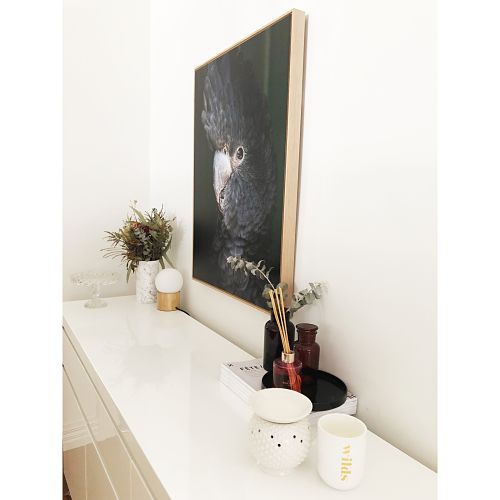
If you have a gnawing sensation that a room doesn’t look finished, ask yourself whether you could improve the situation with wall art. Wall art placed on an unloved section of bare wall can make an enormous difference to the overall feel of a room.
Often, wall art can create symmetry where there was none before. Let’s say that you’ve got a section of wall not doing very much, such a gap between a kitchen nook and a hallway. You could leave the wall space blank, but it’s usually a much better idea to use artwork to bring the area to life. If it’s a thin vertical section of wall, decorating it for the majority of its length with multiple frames works better than placing a single, square picture.
Reason #4: It Creates Texture
One of the main reasons people buy online homewares is to create texture. As beings that evolved in rainforests, we’ve evolved a kind of primal appreciation for depth and contrasting materials. That sense remains with us until this day; it’s why a plain, blank wall isn’t particularly appealing.
People find all kinds of ways to create texture in a room and make it feel less clinical. Cushions, vases, tables, ottomans, drapes, and rugs all play their part. But one of the best ways to create great texture is to use art.
The great thing about art is that it comes in a variety of mediums. You could use canvas, but today’s wall art is so varied that it can comprise practically anything, from forged metal to bamboo sticks. The idea is to break up the monotony of the wall and make it “pop” out at you.
The kind of textures that you choose have a large bearing on how your space will ultimately feel. Rough textures will help the room feel more intimate and cozy. Smooth surfaces, like sheet metal, will feel more sleek and fast-paced. The type of textures that you choose, therefore, depend considerably on your personality and how you want your interiors to make you feel.
Wall art is an essential part of home design. It’s not just a finishing touch (although that is important); it’s also a fundamental part of what it means to renovate a room.
Wall art doesn’t necessarily have to be the last thing you do when overhauling a room. Many of the most successful renovations begin with a piece of art and then use that as inspiration for the rest of the room. Creating great spaces is all about generating juxtaposition with the surrounding materials while also sticking to a definite theme.




